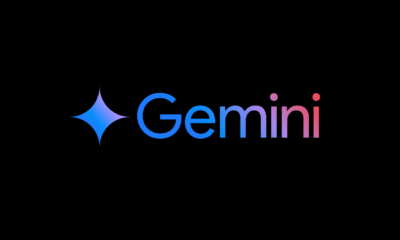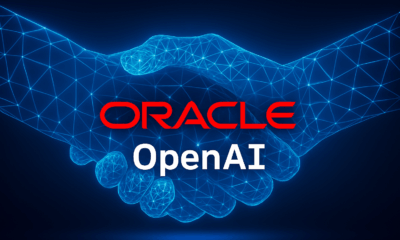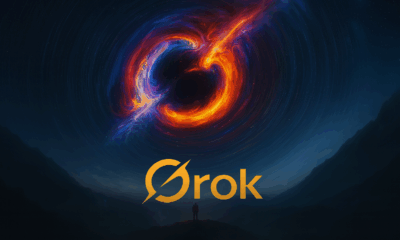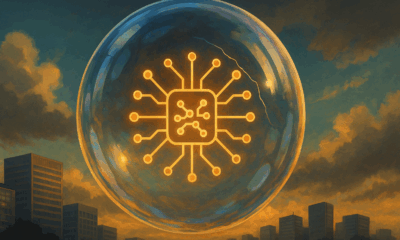News
Behind the Curtain: AI’s Hidden Role in Today’s Layoffs

- Share
- Tweet /data/web/virtuals/375883/virtual/www/domains/spaisee.com/wp-content/plugins/mvp-social-buttons/mvp-social-buttons.php on line 63
https://spaisee.com/wp-content/uploads/2025/07/layoff-1000x600.png&description=Behind the Curtain: AI’s Hidden Role in Today’s Layoffs', 'pinterestShare', 'width=750,height=350'); return false;" title="Pin This Post">
The Quiet Revolution Is Here
Across corporate boardrooms and HR departments, a profound transformation is unfolding—yet it’s being masked behind carefully curated language. As companies lay off tens of thousands of workers, they cite familiar justifications: restructuring, streamlining, shifting priorities. But a growing body of evidence suggests that artificial intelligence (AI) is playing a much larger role in these decisions than leaders are willing to admit.
A recent investigation by CNBC has cast a spotlight on this silent evolution. While companies trumpet the promise of AI in investor calls and marketing materials, they’re often tight-lipped about how these same tools are enabling—or even driving—workforce reductions. The discrepancy between what is said and what is actually happening highlights a larger issue: the lack of transparency surrounding AI’s role in reshaping the labor market.
Corporate Euphemisms: What’s Really Driving Layoffs
In 2025 alone, more than 250,000 tech jobs have been cut, with additional reductions rippling through finance, retail, and logistics. While macroeconomic headwinds and market fluctuations explain part of the picture, insiders suggest another, quieter force is at play: generative AI and automation.
Instead of candidly stating, “We’re replacing jobs with AI,” companies prefer vague terms like “restructuring” or “workflow optimization.” These euphemisms create a narrative that suggests strategic pivots or macro pressures are the primary reasons for layoffs, rather than emerging technologies.
Christine Ying, a labor economist at Harvard University, describes this as a deliberate communication strategy. “Admitting that AI is displacing jobs invites scrutiny—ethical, political, and financial,” she says. “It also challenges the public perception of innovation as purely additive.”
For companies, this lack of transparency minimizes reputational risk. But for workers, it makes it harder to understand which skills are becoming obsolete and what retraining paths they should pursue. It also obscures how fast and far-reaching AI-driven changes really are.
The Rare Exceptions: When Firms Tell the Truth
Although most companies avoid directly attributing layoffs to AI, a few notable exceptions are pulling back the curtain.
IBM made headlines when it disclosed that it had replaced a 200-person HR team with a suite of AI tools. These tools now handle job postings, applicant screenings, and some employee inquiries—functions that once required full-time staff. Likewise, Klarna, a Swedish fintech company, publicly stated that its AI assistant now performs the equivalent work of 700 full-time agents, dramatically cutting its customer service team.
Recruit Holdings, the parent company of Indeed and Glassdoor, acknowledged a six percent workforce reduction, explicitly citing AI’s increasing role in hiring and HR analytics. These admissions, while still rare, hint at a broader industry trend: companies are leveraging AI not just to augment human work, but to replace it.
The Last 10 Percent Problem
One of the most compelling industry narratives around AI is the so-called “last mile” problem. It posits that while AI can handle 80–90 percent of many tasks, the final 10–20 percent—those requiring human judgment or emotional intelligence—still need a person.
In practice, however, companies are increasingly satisfied with “good enough.” If AI can manage 90 percent of a job function with acceptable accuracy and cost savings, many firms are willing to either do without the final human polish or shift it to a smaller pool of remaining employees. The goal is efficiency, not perfection.
Taylor Gocher, CEO of executive recruiting firm Connex Global, observes that many companies initially plan to supplement AI with human support. “But once they see the cost savings,” he says, “they start questioning how much human oversight is really necessary.”
This shift means that even roles once considered safe—those requiring partial AI assistance—are now vulnerable to full automation.
Conflicting Narratives from the Top
Executives are divided on how they publicly address AI’s workforce impact. Some, like Salesforce CEO Marc Benioff, insist that their AI strategy is about augmentation, not elimination. He recently stated that Salesforce’s AI tools are designed to empower employees, not replace them.
On the other end of the spectrum, IBM’s Arvind Krishna and Klarna’s Sebastian Siemiatkowski have been candid about using AI to eliminate jobs and drive down costs. Microsoft, for its part, quietly saved $500 million by automating call center operations—while simultaneously cutting more than 15,000 jobs in 2025.
The disconnect between public messaging and internal decisions has created confusion among employees and investors alike. While the CEOs of AI labs such as Google DeepMind and Anthropic issue warnings about AI-induced job losses, some tech giants promote AI as a job creator. The reality, as it often is, lies somewhere in the middle—but trending toward displacement in the near term.
Who’s Losing Their Jobs First
The impact of AI is not evenly distributed. Certain types of roles are being phased out more quickly than others. Early data from labor markets across the U.S., Australia, and Europe show steep declines in demand for administrative assistants, contact center staff, junior analysts, and bookkeepers.
These roles share common traits: they are repetitive, rules-based, and data-heavy. Tasks like invoice processing, calendar scheduling, customer inquiry routing, and data entry are prime candidates for large language models and robotic process automation.
In Australia, government statistics revealed marked job losses among accounting clerks and banking operations staff, directly correlated with AI tool adoption in the finance sector. In the U.S., recruiting and HR departments are seeing fewer new hires as AI platforms streamline applicant tracking and onboarding.
This wave of AI-driven obsolescence is beginning at the base of the white-collar pyramid—but could rise rapidly if current trends continue.
The Speed and Scale of Change
What makes this wave of job loss so different from past technological disruptions is its speed. Previous industrial revolutions unfolded over decades. The AI shift is happening in a matter of years—and sometimes months.
In 2025 alone, Microsoft, Google, and Meta announced cumulative layoffs exceeding 40,000 employees. While none blamed AI outright, internal documents and financial disclosures show that many of the eliminated roles are being replaced or supported by automation tools.
The accelerating pace raises red flags for economists and labor advocates. If the labor market can’t adjust quickly enough—with reskilling programs, safety nets, and new job creation—entire swaths of the workforce could be left behind.
The Hidden Cost of Silence
For workers, the lack of clarity around AI’s role in layoffs makes it harder to respond. If a company says it’s “restructuring” but doesn’t specify that it’s deploying AI to replace certain job functions, employees have no way to understand the emerging threats to their positions.
This ambiguity also hinders policymakers. Governments looking to regulate or tax AI to support displaced workers need accurate data. If companies underreport AI’s role in layoffs, those policies may never materialize.
Christine Ying suggests that mandatory disclosure laws could be one solution—requiring firms to declare when automation is directly responsible for headcount reductions. “You can’t build a fair transition if you don’t know what you’re transitioning from,” she says.
A Glimpse of the Future
Even as AI eliminates some jobs, it creates others—albeit in smaller numbers and with different skill sets. Fields like prompt engineering, AI ethics, data annotation, and robotics maintenance are growing. But these new roles often require advanced education, technical expertise, or creativity—traits not evenly distributed across the population.
Amazon’s CEO Andy Jassy has stated that while AI will eliminate some roles, it will also create new opportunities in robotics and warehouse automation. That may be true, but there’s no guarantee the people losing their jobs will be the ones filling the new ones.
That’s why upskilling has become the mantra of the decade. Tech-forward companies are investing in training programs to help employees transition. But such efforts are not yet universal, and workers in non-tech sectors may find themselves with fewer options.
Toward a More Transparent Transition
The AI revolution is here, but it’s not being announced with banners and press releases. It’s arriving quietly, line by line in balance sheets, through disappearing job postings and empty desks.
Transparency could help ease the transition. By honestly acknowledging AI’s role in workforce changes, companies can build trust, prepare employees, and work with policymakers to design effective safety nets. Acknowledgment is the first step toward mitigation.
The coming years will define the future of work. Will AI be a partner or a rival? Will it empower or exclude? The answers depend not just on algorithms, but on the choices we make now—about ethics, disclosure, and inclusion.
For now, the layoffs continue. And AI, for the most part, remains the unspoken actor behind the scenes.
AI Model
How to Prompt Nano Banana Pro: A Guide to Creating High-Quality Images with Google’s AI

Why Nano Banana Pro Matters
Nano Banana Pro is Google DeepMind’s most advanced image generation model, built on the powerful Gemini 3 Pro architecture. It delivers high-resolution outputs (up to 4K), understands complex prompts with layered context, and performs exceptionally well when generating realistic lighting, textures, and dynamic scenes. It also supports image referencing — letting you upload photos or designs to guide the visual consistency.
In short, it’s not just a toy — it’s a tool for designers, marketers, illustrators, and creatives who want to build professional-grade images fast. But to unlock its full potential, you need to learn how to prompt it properly.
Prompting Basics: Clarity Beats Cleverness
The secret to powerful results isn’t trickery — it’s clarity. Nano Banana Pro doesn’t need keyword spam or obscure syntax. It needs you to be specific and structured.
Here are the key rules to follow:
- Be descriptive, not vague: Instead of “a cat,” write something like “a ginger British shorthair cat sitting on a marble countertop under soft morning light.
- Layer your descriptions: Include details about the subject, setting, atmosphere, materials, lighting, style, and mood.
- State your format: Tell the model if you want a photo, digital painting, cinematic frame, 3D render, infographic, comic panel, etc.
- Use reference images: Nano Banana Pro supports multiple uploads — useful for matching styles, poses, faces, characters, or branding.
This is how professionals prompt: not by hacking the system, but by being precise about what they want.
Crafting Prompts by Use Case
📸 Realistic Photography
Want a product photo, fashion portrait, or cinematic still? Then your prompt should include lens type, lighting style, subject age, composition, and color grading.
Example:
Professional studio portrait of a 35-year-old woman in natural light, soft cinematic lighting, shallow depth of field, 85mm lens look, natural skin tones, soft shadows, clean background, editorial style.
Another example:
A 3/4 view of a red sports car parked in a luxury driveway at golden hour, realistic reflections, soft shadows, DSLR-style image, bokeh background.
These prompt structures help the model replicate not just the subject but the feel of a professionally shot image.
🎨 Illustration, Comic Art, and 3D Concepts
If you want stylized work — like a retro comic, anime-style character, or matte painting — the style must be part of the prompt.
Example:
Comic-style wide cinematic illustration, bold black outlines, flat vibrant colors, halftone dot shading, a heroic female astronaut on Mars with a pink sky, dramatic lighting, wide aspect ratio.
More styles to try:
- Fantasy concept art, a medieval knight riding a dragon above stormy mountains, painted in the style of Frank Frazetta, high detail, dramatic lighting.
- Cyberpunk anime character in a rain-soaked Tokyo alley, glowing neon lights, futuristic fashion, overhead perspective, digital painting.
Tip: Reference known artistic styles (e.g., Art Nouveau, Impressionism, Pixar, Studio Ghibli) to guide the tone.
🔄 Editing Existing Images
Nano Banana Pro can also transform existing images by changing backgrounds, lighting, or adding/removing objects.
Examples:
Replace the background with a rainy city street at night, reflect soft blue and orange lights on the subject, keep original pose and composition, cinematic tone.
Add a glowing book in the subject’s hands, soft magical light cast on their face, night-time indoor setting.
Best practices:
- Use clear “before/after” language.
- Indicate what must stay unchanged.
- Specify the mood or lighting effect you want added.
Common Mistakes to Avoid
- Too generic: A prompt like “a girl standing” tells the model almost nothing. Who is she? Where is she? What’s the style?
- Keyword stuffing: Don’t use outdated tricks like “masterpiece, ultra-detailed, trending on ArtStation.” They’re mostly ignored.
- Ignoring context: Don’t forget to describe how elements relate (e.g. “holding a glowing orb” vs. “glowing orb floating behind her”).
- Unclear intent for text/logos: If you want branded material, say exactly what the logo or label should look like, and where.
Prompt Templates You Can Use Right Now
Try adapting these for your needs:
- “Cinematic 4K photo of a mountain climber reaching the summit at sunrise, orange glow on snowy peaks, lens flare, dramatic sky.”
- “Retro-futuristic 3D render of a diner on Mars, neon signs, dusty surface, stars in the background, warm ambient light.”
- “Isometric vector-style infographic showing renewable energy sources, solar, wind, hydro, with icons and labels.”
- “Realistic photo of a smartwatch product on a floating glass platform, minimalistic white background, soft shadows.”
These prompts are short but rich in visual instruction — and that’s the key to strong output.
Going Further: Advanced Prompting Tips
- Use cinematic language: Words like “soft light,” “overhead shot,” “close-up,” “medium angle,” “shallow depth of field” guide the AI like a film director.
- Test with reference images: Upload an image of your brand, product, or character to maintain continuity.
- Iterate: If your first image isn’t right, adjust one or two variables (e.g., lighting, background, subject age) and regenerate.
- Define aspect ratios: Use “cinematic,” “vertical portrait,” “square crop” if you need a specific format.
- Stay natural: Write prompts like you’re briefing a professional illustrator or photographer.
Final Thoughts
Nano Banana Pro is one of the most powerful visual AI tools available — but it’s only as good as your prompts. Whether you’re an art director, a solo founder, or a content creator, learning to prompt well is the fastest way to unlock its full creative range.
Focus on clarity, visual language, and style specificity. Add references when needed. Think like a photographer, art director, or storyteller. The better your brief, the better the image.
Want more? Ask for our expanded prompt pack: 50+ ready-made formulas across categories like product design, sci-fi art, fantasy scenes, infographics, editorial portraits, and more.
AI Model
Qwen vs. ChatGPT — Which AI Assistant is Better — and For What

Why This Comparison Matters Now
Qwen, the large language model developed by Alibaba Cloud, has recently been gaining significant attention. The release of Qwen 2.5-Max and its successors has sparked comparisons across benchmarks covering reasoning, coding, long-context handling, and multimodal tasks. Meanwhile, ChatGPT continues to dominate as the default choice for many users who prioritize conversational quality, creative tasks, and ease of use. Comparing the two is increasingly important for anyone deciding where to invest their time, money, or infrastructure in 2025.
Let’s explore how Qwen and ChatGPT compare across major performance categories — and which model might suit your needs better.
Where Qwen Shines: Power, Context, and Flexibility
One of Qwen’s strongest features is its ability to handle long-context reasoning and document-heavy workflows. With larger context windows than many competitors, Qwen is particularly adept at analyzing long reports, writing consistent long-form content, summarizing legal or technical material, and managing multi-layered input without losing coherence. It’s a powerful tool for users who need depth.
Qwen also excels in structured logic and code-related tasks. In independent evaluations, it has shown impressive results in mathematical reasoning, data extraction, and code generation. For developers and technical users looking for an AI assistant to support real engineering workflows — rather than simply explain code snippets — Qwen is a highly capable alternative to established incumbents.
Multimodal and multilingual flexibility is another area where Qwen stands out. It supports text, image input, and multiple languages, enabling it to serve as a true assistant across varied communication and media formats. That’s particularly useful for global users or teams operating in bilingual or multilingual environments.
Finally, the open-source accessibility of Qwen is a major advantage. While not every version is fully open, many variants are freely available and can be run locally or fine-tuned. For users prioritizing data control, customization, or cost-efficiency, that’s a serious point in Qwen’s favor.
Where ChatGPT Excels: Conversation, Creativity, and Ecosystem
ChatGPT continues to lead when it comes to polish and user experience. Its conversational flow is smooth, stylistically natural, and often feels more human than any other model on the market. That’s invaluable for creative writing, ideation, storytelling, or any application that requires tone, style, and nuance. It’s also why many casual users prefer ChatGPT over more technical models.
ChatGPT’s integration with live data, APIs, and tools (depending on the version) provides a dynamic and extensible platform for users who need real-time insights or app-level functionality. If you’re looking for an assistant that can browse the web, generate code, search documentation, or plug into third-party services, ChatGPT is often the more mature choice.
Consistency, reliability, and safety mechanisms also remain a strength. For teams or individuals who don’t want to think about model drift, hallucination tuning, or backend parameters, ChatGPT offers a plug-and-play solution that’s hard to beat. It’s a tool that just works — and that simplicity matters more than benchmark scores for a wide audience.
The scale and maturity of ChatGPT’s ecosystem also give it a clear edge. From community guides to business integrations, apps, and workflows — it’s supported nearly everywhere, and that makes it easy to adopt regardless of your skill level.
Limitations and Trade-offs
That said, Qwen and ChatGPT each come with their own trade-offs.
Qwen, while powerful, sometimes lacks the fluency or stylistic finesse that makes ChatGPT feel so natural. It can hallucinate in edge cases, and while some versions are open-source, the most powerful iterations may still depend on Alibaba’s infrastructure, limiting portability for privacy-centric users.
ChatGPT, for its part, is a closed model, with cost barriers and fewer customization options. It also has a more constrained context window in some versions, making it less ideal for ultra-long documents or advanced reasoning across large data structures.
Which Model Should You Use?
If your work involves processing long documents, building tools, working with code, or requiring multilingual support — and you value the ability to run models locally or integrate them deeply — Qwen is an excellent fit. Its performance is strong, and it offers more technical freedom for advanced users.
If your needs are creative, conversational, or content-driven — and you want something intuitive, responsive, and polished out of the box — ChatGPT is still the best experience available today. It’s perfect for brainstorming, writing, email generation, and any task where clarity, creativity, and tone matter.
For enterprise teams, researchers, and power users — using both might be the optimal solution. Qwen can handle the heavy lifting in development and data, while ChatGPT takes care of interaction, presentation, and ideation.
Final Verdict
There’s no absolute winner in the Qwen vs. ChatGPT debate — only better fits for different tasks. Qwen brings muscle, flexibility, and context awareness. ChatGPT delivers fluency, elegance, and seamless usability.
In the AI race of 2025, the smartest move isn’t to pick a side — it’s to pick the right tool for the job.
News
Alibaba’s AI Coup: Qwen App Hits 10 Million Downloads in One Week — And the AI Wars Just Escalated
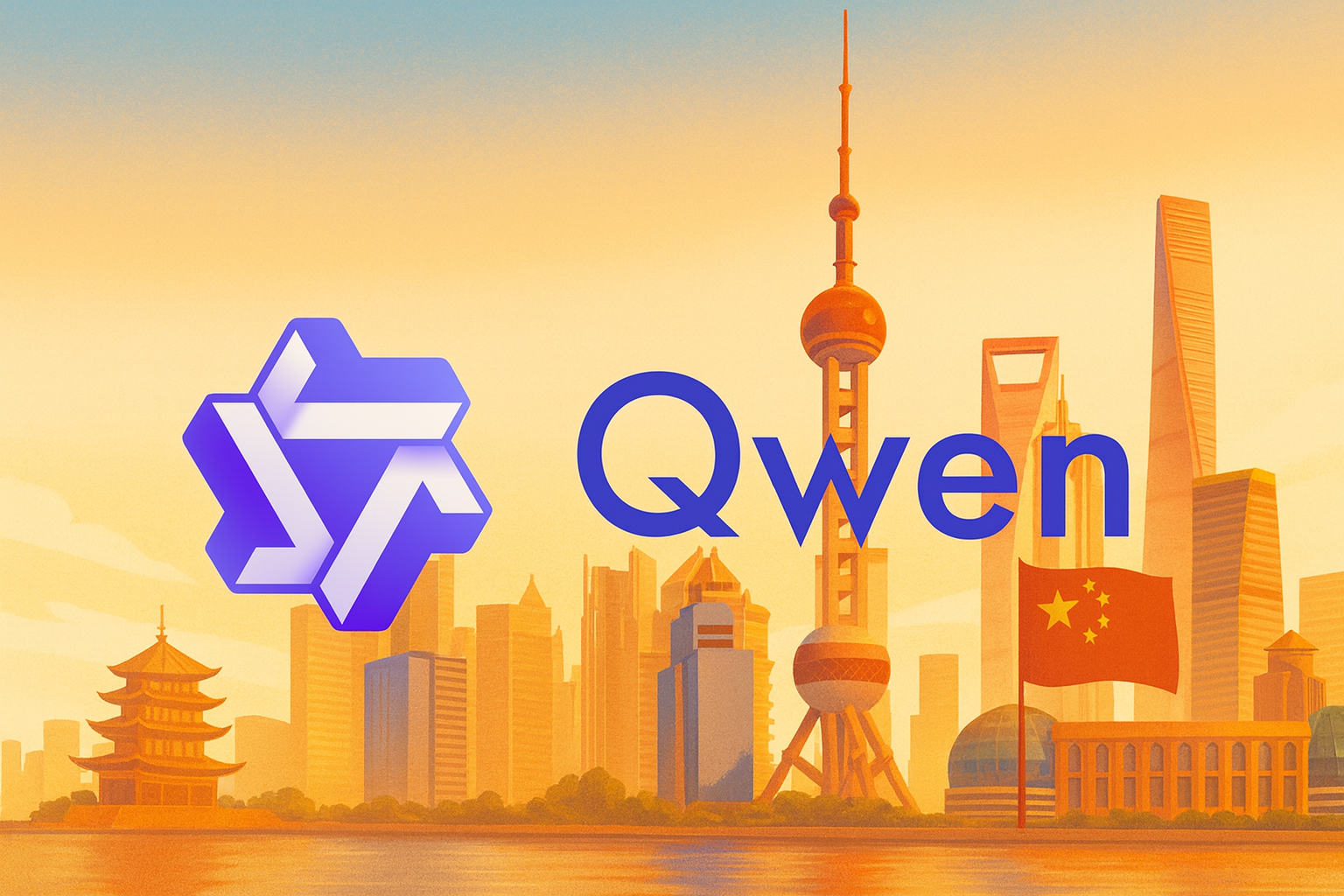
A Meteoric Debut for Qwen
Alibaba’s freshly launched Qwen app has crossed 10 million downloads in just its first seven days — a staggering adoption rate that places it among the fastest-growing AI applications globally. The explosive start signals more than consumer interest. It marks Alibaba’s transition from infrastructure giant to serious AI contender in the public arena.
Qwen Isn’t Just Another Chatbot
At the core of Qwen’s early success is its engine: the Qwen model family, developed in-house by Alibaba. These large language models (LLMs) are multimodal — capable of processing not just text, but also images, audio, and potentially video. Unlike other AI tools that remain sandboxed in niche applications, Qwen is designed as a true all-in-one assistant.
From drafting documents and summarizing reports to answering questions and managing multimedia tasks, Qwen is built to be useful — not just entertaining. And critically, it launched with a free-access model, eliminating the subscription paywall that often hinders adoption in early-stage AI apps.
From E-Commerce to Everyday AI
This launch represents a clear strategic pivot for Alibaba. Historically known for e-commerce dominance and its powerful cloud infrastructure (via Alibaba Cloud), the company is now positioning itself as a top-tier player in the AI space — not just at the backend, but at the consumer-facing layer.
Qwen is not just a product — it’s a platform play. It ties into Alibaba’s cloud resources, shopping ecosystem, productivity tools, and eventually, financial services. By releasing it as a standalone, viral consumer app, Alibaba is laying the groundwork for a much bigger AI ecosystem play.
Global AI Ambitions, Starting in Asia
While Qwen’s initial rollout is concentrated in China and Southeast Asia, there are clear signs Alibaba intends to push the app globally. With Western alternatives like ChatGPT, Claude, and Gemini facing geopolitical and regulatory barriers in some regions, Qwen could capitalize on being both regionally accessible and locally optimized.
Additionally, the app’s early traction reflects strong demand for AI solutions tailored to regional languages, customs, and ecosystems. As Chinese tech continues to look outward, Qwen may become a cultural as well as a technological export — one capable of competing head-to-head with the biggest names in global AI.
The Next Phase: Monetization and Market Power
Crossing 10 million downloads in a week is only the first milestone. The real test lies in retention, monetization, and integration. Alibaba will now focus on converting casual users into power users, offering advanced features, integrating payments, cloud-based services, and potentially leveraging the app to strengthen its broader commercial footprint.
There is already speculation that Qwen could evolve into the “WeChat of AI” — a super-assistant that combines messaging, productivity, shopping, and finance in a single intelligent interface. If that vision materializes, Alibaba may have just positioned itself as the most powerful AI consumer company outside the West.
Final Thought
The Qwen launch is not just about downloads. It’s about direction. Alibaba has made its move — not with hype or vague roadmaps, but with a working, useful, and widely adopted AI assistant. The global AI race is officially more competitive than ever.
-

 AI Model2 months ago
AI Model2 months agoHow to Use Sora 2: The Complete Guide to Text‑to‑Video Magic
-

 AI Model4 months ago
AI Model4 months agoTutorial: How to Enable and Use ChatGPT’s New Agent Functionality and Create Reusable Prompts
-

 AI Model5 months ago
AI Model5 months agoComplete Guide to AI Image Generation Using DALL·E 3
-

 AI Model5 months ago
AI Model5 months agoMastering Visual Storytelling with DALL·E 3: A Professional Guide to Advanced Image Generation
-

 AI Model3 months ago
AI Model3 months agoTutorial: Mastering Painting Images with Grok Imagine
-

 News2 months ago
News2 months agoOpenAI’s Bold Bet: A TikTok‑Style App with Sora 2 at Its Core
-

 AI Model7 months ago
AI Model7 months agoGrok: DeepSearch vs. Think Mode – When to Use Each
-

 Tutorial2 months ago
Tutorial2 months agoFrom Assistant to Agent: How to Use ChatGPT Agent Mode, Step by Step
